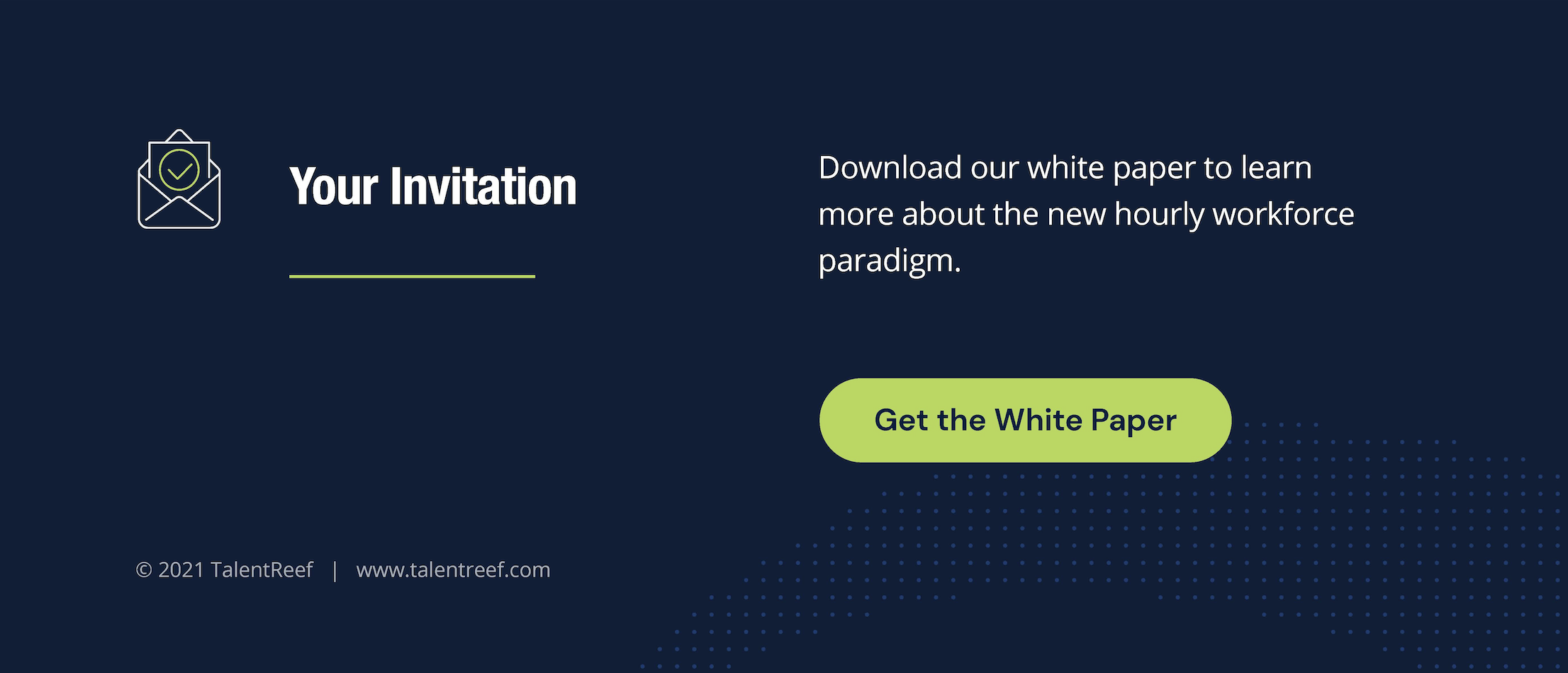When COVID-19 was at its peak, employers across the country temporarily shut down or reduced their staff because lockdowns and social distancing meant few, if any, customers were coming through their doors. But over the past few months, employers have been trying to ramp up their hiring to meet this revitalized consumer demand.
Instead, 4.3 million people (nearly 3% of the workforce) quit their jobs in August 2021— the highest quit rate since the U.S. Bureau of Labor Statistics (BLS) began collecting such data in December 2000. In September, the quit rate in the leisure and hospitality industry in particular was 6.4%, more than double the national average. Times have rapidly changed since early 2020 and while hiring managers are juggling more tasks than ever, many companies are at the very least, understaffed, and at the very worst, not even able to open for business on a day-to-day basis.
What is this telling us? That the hourly workforce dynamic has changed. While historically the employer has always been in control of hiring, now the candidates are the ones in control.
The majority of the hourly workforce — Millennials and Gen Zers — now have different expectations about their hiring and working experience than they would have before the pandemic. With more job openings than potential employees, companies must stand out and prove why a candidate should choose them. A good place to start is by writing a clear and concise job description.
While higher wages and better benefits are attractive perks, it might not be enough to get companies back to pre-pandemic staffing levels. Hourly workers are also looking for a company that aligns with their values and beliefs. So much so that they are overwhelmingly more loyal to companies that help them contribute to social and environmental issues and are even willing to take a pay cut to work for a like-minded employer. And not only are purpose-driven companies attracting these applicants, but they have 40% higher retention rates than competitors.
Also important to Millennials and Gen Zers? A true work-life balance, especially when it comes to flexibility in work hours. Flexible hours aren’t just for the Work from Home crowd. Scheduling hourly workers around their preferred hours is ideal because last-minute changes can affect their other personal and work responsibilities. In fact, one survey found that more than a quarter of the jobs that candidates rejected in 2020 were due to the hours offered while only 10% were a result of pay. It’s essential that the hours you’re hiring for match the candidate’s expectations and schedule, or you risk having to hire for the same position again in a couple of weeks.
In addition, because employees are in such high demand, candidates are less likely to work through a complicated application process and are more likely to accept an offer from the first company that makes it easy to get hired. You have to streamline the application process and respond to qualified candidates as soon as possible or you risk losing them.
“The more that we can reduce the number of steps that they have to take in order to get to what they want, which is filling out an application, the better,” said Joe Poxson, executive vice president of strategic markets at TalentReef. “The more requirements you put in front of a candidate, especially an hourly worker, the more risk you have that they will drop out of the process.”
How to Attract More Hourly Applicants in Today’s Hiring Climate
Seventy-three percent of applicants will abandon a job application if it takes them longer than 15 minutes, so hiring managers need fast and efficient ways to engage interested job candidates and schedule interviews. A fast and streamlined application process is the key to getting candidates in the door.
“Once a person is attracted to the position and sees themselves being part of the brand, it’s really about speed,” said Ryan Pellet, senior vice president of customer success at TalentReef. “Speed is everything at that point. You need to be able to immediately get qualified candidates into a process where you can learn more about them and they can know that the company is interested.”
Candidates are looking at many job options and the best candidates get hired quickly, so applicants who don’t receive an immediate response are more likely to move on to the next option. Being able to send a quick text message or automatically schedule an interview increases the likelihood of a positive interview experience and the potential for hire, while also helping prevent interview ghosting.
A critical component of moving the process along quickly is a talent management system that enables hiring managers to eliminate or reduce the time required for things like completing applications, scheduling interviews, answering applicants’ questions, and assessing their qualifications. Niche solutions might meet this need if you’re looking to solve a single problem, but it may not integrate with your current system, which will in turn make your hiring process even longer. For the complex process of hiring hourly employees, you need a complete solution that integrates AI-based, low-touch management.
When you engage in high-volume, location-based hiring of hourly workers, there are five components that make or break a talent management system: optionality, speed, flexibility, automation, and data. We’ve touched on speed and automation above, but download our white paper for a deeper dive into the new hourly workforce paradigm and why these five factors are so important for boosting your applicant flow.
